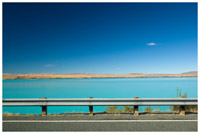The Federal Government recently announced planned improvements to its auto crash test program for new cars and trucks, to take effect for the 2010 model year.
The plan is to expand the traditional program of grading vehicles from one to five stars.
To be added to the usual stars will be an overall safety rating that will combine scores from multiple crash tests.

Consumers Want Real Testing and Real Facts
The new program also will add new front-end tests, and other specific-instance situations such as a car’s side hitting a pole, or the use of crash test dummies representing women and large children to see how they respond to certain collisions.
The changes were made in response to consumer complaints that too many vehicles earn top grades in testing, four or five stars.
Such duplicity presents challenges to car buyers who want to compare vehicles for safety aspects.
There is More to it Than Just Smashing Cars
Crash testing is not as simple as meets the eye. Beyond smashing a car into a stationary object – and watching crash-test dummies bounce to and fro – there is a great science involved.
Researchers use computerized crash data to estimate the likelihood of injuries that might occur in a crash. Tests are performed under meticulous scientific and safety guidelines.
Crash data through the years was utilized by the National Highway Traffic Safety Administration to create the star system.
What Do They Test?
You hear about crash testing all the time, but do you know how they test and how they calculate ther results? Here is a quick rundown on crash testing and their rating system.
There are two main types of crashes tested today.
Side Impact
 Crashes that result from a side impact are rated using stars which are determined by the worst of two sets of criteria:
Crashes that result from a side impact are rated using stars which are determined by the worst of two sets of criteria:
- Thoracic Trauma Index
- Lateral Pelvic Acceleration
To get a five-star rating, both criteria must be in the range indicating less than a 5% chance of serious injury.
The Star System
- 5 stars for 5% or less chance of serious injury
- 4 stars if chance of serious injury is 6% to 10%
- 3 stars if chance of serious injury is 11% to 20%
- 2 stars if chance of serious injury is 21% to 25%
- 1 star if chance of serious injury is 26% or greater
Frontal Impact
 Crashes that result from a frontal impact are rated using stars which are determined by the worst score of three sets of criteria:
Crashes that result from a frontal impact are rated using stars which are determined by the worst score of three sets of criteria:
- Head injury
- Chest deceleration
- Femur load
To get a five-star rating, all three must be below the level that indicates a 10% chance of severe injury.
A star rating is set for each of the front-seat passengers, for both side impact and frontal impact tests.
The Star System
- 5 stars for 5% or less chance of serious injury
- 4 stars if chance of serious injury is 11% to 20%
- 3 stars if chance of serious injury is 21% to 35%
- 2 stars if chance of serious injury is 36% to 45%
- 1 star if chance of serious injury is 46% or greater
What Else They Test
Frontal- and side-impact aren’t the only tests being used to keep motorists safe, because lets face it, they aren’t the only types of collisions that exist.
Offset Tests
Where only a portion of the front of a car collides with a barrier. The concept is to test for situations such as cars turning into oncoming traffic.
Roll-Over tests
Check a car’s tendency to support itself in the case of a dynamic impact. Roll-over tests became more known in recent years following reports of sport utility vehicle roll-overs. Consumers wanted to know if they’re SUV was going to roll with them in it.
 Roadside Hardware Crash Tests
Roadside Hardware Crash Tests
Tests the effectiveness of roadside barriers, crash cushions, guard rails, sign posts, light poles and other stationary roadside hardware designed to keep cars on the road where they belong.
Test results can be dramatic for certain cars. For example, the Rover 100 in 1998 received a one-star Adult Occupant Rating from certain crash tests. An 18-year-old design was dumped in response to fast-falling sales.
The Isuzu Trooper was scrapped just two years after Consumer Reports ranked 1995-1997 models as “Not Acceptable†due to findings that they could roll over during testing.
